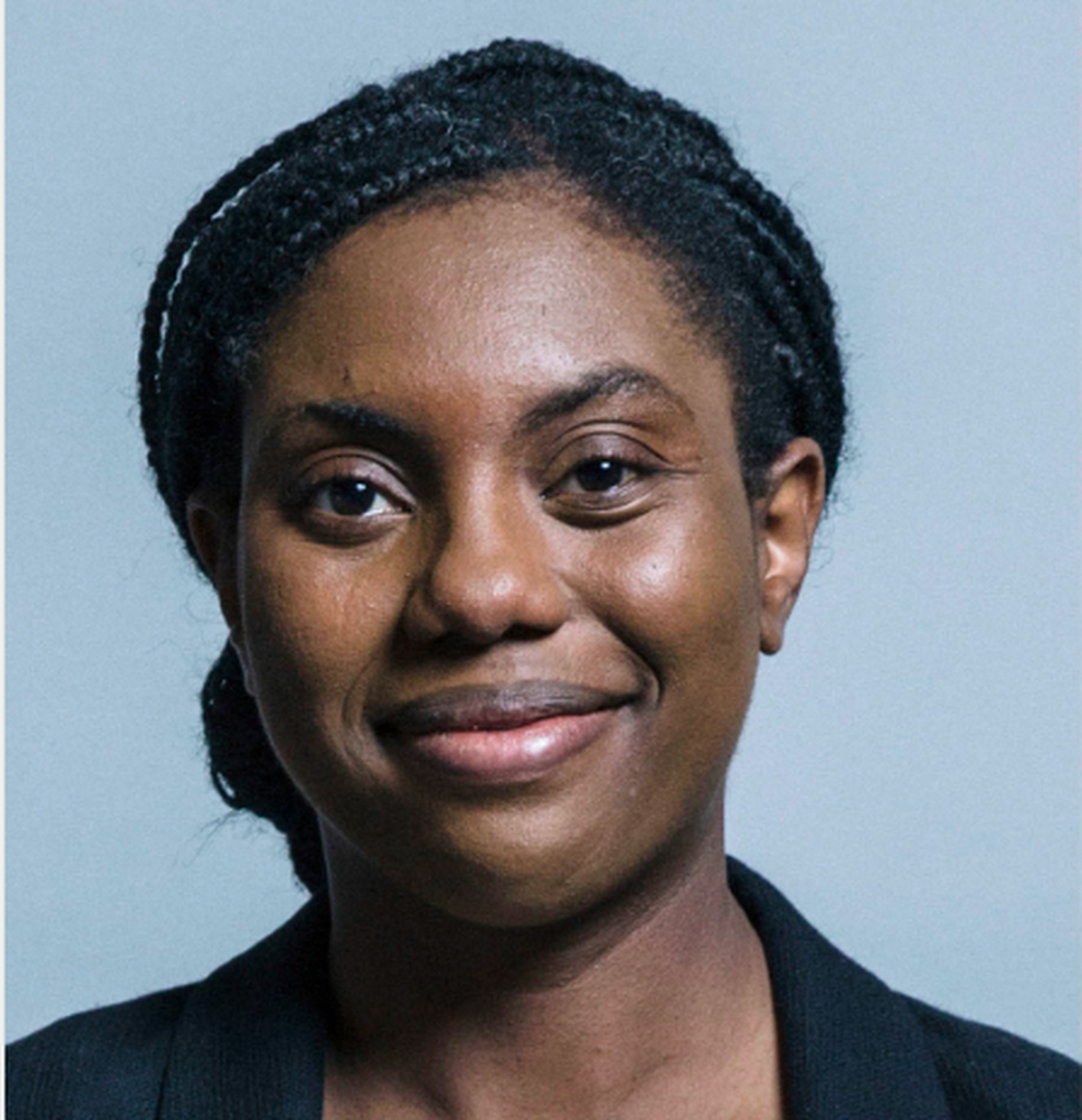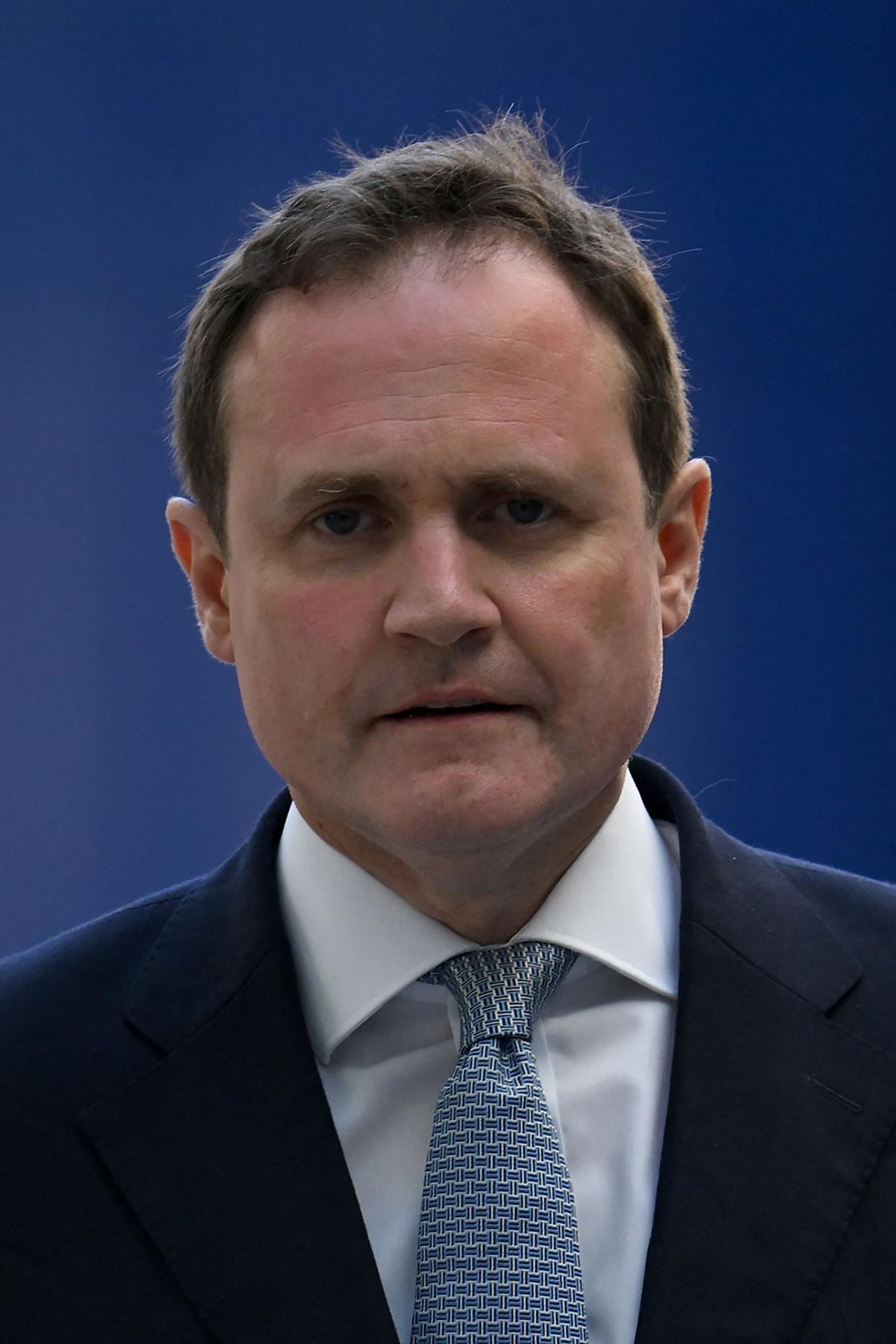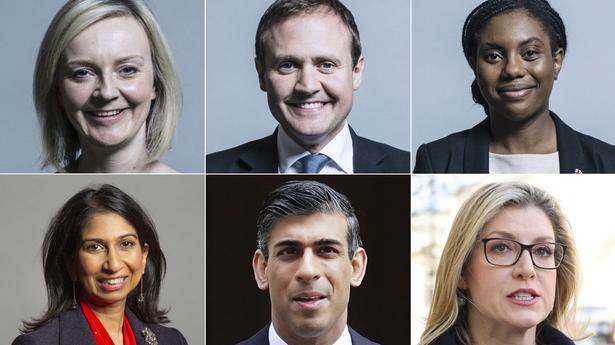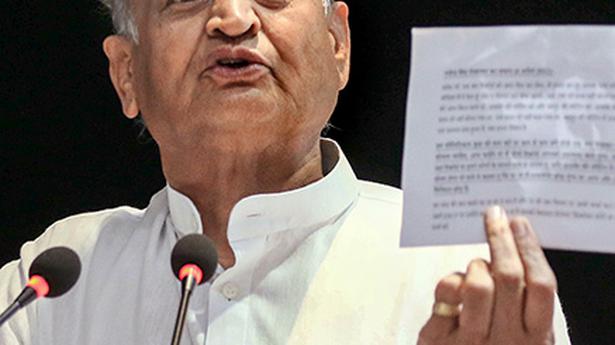The contest is now down to five candidates after the second ballot of Conservative party lawmakers with former Finance Minister Rishi Sunak in the lead
The contest is now down to five candidates after the second ballot of Conservative party lawmakers with former Finance Minister Rishi Sunak in the lead
The story so far: The second round of voting by Conservative Party MPs to replace outgoing Prime Minister Boris Johnson as the leader of the Tories and the new British Prime Minister, concluded on Thursday, July 14. The candidate leading the race is former British Finance Minister Rishi Sunak, whose resignation led to a flurry of ministers stepping down from Mr. Johnson’s government, leading to the PM’s resignation.
How and when will the Prime Minister get elected?
The new Prime Minister of the United Kingdom will not be elected through a general election but through internal ballots in the Conservative Party, which still holds a majority.
The Opposition Labour party had asked for a motion of confidence in the government and in Mr. Johnson, as they want him to step down with immediate effect as opposed to when the new Prime Minister is finally elected. The Labour motion was rejected by the government on July 11 as the norm is to table a straightforward motion to test the confidence of the House in the government, without naming the Prime Minister. Labour’s motion would have put Tory lawmakers in a tricky situation as it would require them to show alignment with the government and Mr. Johnson to win the vote. Losing a no-confidence vote would trigger general elections.
Instead, the government decided on July 13 to introduce a motion of confidence in itself, a vote on which is expected by next week, according to the BBC.
Graham Brady, the chair of the 1922 Committee or the Conservative Private Members’ Committee of influential Tory parliamentarians or backbencher MPs who do not hold any government posts, drew up a timetable of the process to elect the new leader.
July 12: Nominations to be the new leader of the Conservative Party formally opened and also closed. At this stage, a candidate needed the backing of 20 MPs including one proposer, one seconder, and 18 other party lawmakers.
July 13: The first round of voting by 358 Conservative MPs to shortlist candidates from those who cleared the nomination stage. Candidates need at least 30 votes in the first round to advance to the next.
July 14: The second round of voting to eliminate the candidate with the least number of votes.
Up to July 21: Subsequent rounds of voting to shortlist the final two candidates.
July/ August: The final two Prime Ministerial candidates to go campaigning among Tory party members across the country to win their votes after which 160,000 members will send their votes through postal ballots.
September 5: The Conservative Party announces who has been elected as the new leader of the party by members. As the selected leader will command a parliamentary majority, they will consequently become the next Prime Minister.
Who is still in the race and what are they pitching for?
Eight Tory MPs had qualified to enter the race after securing the support of at least 20 of their colleagues by the time voting closed on Tuesday evening (July 12). By the end of the first round of voting on July 13, two of the eight candidates could not win the support of 30 MPs each — former Foreign Secretary Jeremy Hunt and newly appointed Iraqi-origin Chancellor Nadhim Zahawi. The remaining six candidates went into the second round on July 14. After the second round, the candidate with the least number of votes, Suella Braverman, was eliminated. Here is a brief look at the six candidates that cleared the first round.
Rishi Sunak
File photo of former British Chancellor of the Exchequer (finance minister) Rishi Sunak
| Photo Credit: Reuters
The Indian-origin former Chancellor of the Exchequer leads the field in the second round of voting, with 101 votes. The 42-year-old former Goldman Sachs banker, who first got elected to Parliament from the Richmond (Yorks) constituency in 2015, reached up the ranks fairly quickly. After being a part of former Prime Minister Theresa May’s government, he was appointed as the Treasury Chief Secretary when Mr. Johnson took charge in 2019 and bagged the country’s second most important government position, Chancellor of the Exchequer, in 2020.
In the months leading up to his resignation from Mr. Johnson’s government, Mr. Sunak’s popularity slumped owing to a series of controversies. He faced criticism earlier this year for his handling of Britain’s worst cost of living crisis since 1972. Then came the controversy involving his wife Akshaya Murthy’s non-domicile tax status in the U.K., attracting Opposition fury as it meant she did not have to pay British taxes on foreign dividends coming annually from Infosys, the Indian company co-founded by her father N.R. Narayana Murthy. Ms. Murthy eventually announced that she would be paying all her taxes in the U.K. Then, Mr. Sunak and Mr. Johnson were fined for breaching COVID-19 restrictions to attend a party in 2020.
Mr. Sunak, while setting out his pitch for the Prime Minister’s post, said that he would make it his first priority to reduce high inflation, unlike the immediate tax cuts proposed by his opponents. He said in his campaign video that he wants to confront the U.K.’s current economic reality with “seriousness” and “determination” rather than telling the public “comforting fairy tales”.
Mr. Sunak also committed, on Tuesday, to stick to Mr. Johnson’s pledge to the North Atlantic Treaty Organization (NATO), that the U.K. would increase its defence spending to 2.5% of GDP by 2030 (i.e., above NATO’s annual target of 2%).
Penny Mordaunt
British Conservative MP Penny Mordaunt speaks at an event to launch her campaign to be the next Conservative leader and Prime Minister, in London, Britain July 13, 2022.
| Photo Credit: Reuters
Junior Trade Minister Penny Mordaunt came in second with 83 votes in the second round of voting on Wednesday. She is known for becoming Britain’s first female Defence Secretary in 2019, albeit for a short period of 85 days, after which she was sacked by Mr. Johnson when he took charge. She entered the cabinet again after a year as Paymaster General and was subsequently made the Minister of State for Trade in the 2021 Cabinet reshuffle. She has also previously served as the Minister for Women and Equalities. She is also known for her appearance on a now-off air British relay TV show Splash.
Ms. Mordaunt is a Brexit supporter and has said in her pitch that she hopes to hold discussions to get the British economy growing again. George Freeman, one of the Tory MPs backing her, told the BBC about Ms. Mordaunt’s plan: “firstly, an emergency budget, the targeted tax cuts for those really struggling with the cost of living, and for those small businesses, the job creators.” She also plans to raise income tax thresholds for basic and middle-income populations as per inflation and has also promised to bring down Value Added Tax (VAT) on fuel. She has also pledged to make the British leadership “a little less about the leader” and “a lot more about the ship”.
Liz Truss
British Foreign Secretary Liz Truss leaves after the weekly cabinet meeting on Downing Street, in London, Britain May 24, 2022.
| Photo Credit: TOBY MELVILLE
Foreign Secretary Liz Truss was first elected to the parliament from South West Norfolk in 2010 and is popular among the Tories. She came in third with 64 votes in the second round of Tory voting.
Having received praise for handling Britain’s stance on the Russia-Ukraine conflict, she is a Boris Johnson loyalist and did not resign even as he lost support in his party. Ms. Truss has served in multiple positions under former Prime Ministers David Cameroon, Theresa May and Mr. Johnson, including the posts of Chief Treasury Secretary, and International Trade Secretary when she negotiated post-Brexit trade pacts.
She said in her pitch on Thursday, July 14 that she was the only contender having the experience of taking “tough decisions”, and that such is the nature of decisions needed to get the British economy out of the woods. Among her campaign promises are introducing immediate tax cuts and rolling back increase in National Insurance payments on earnings.
According to a Reuters report, Ms. Truss said at her campaign launch event on Thursday : “We have to level with the British public that our economy will not get back on track overnight. Times are going to be tough, but I know that I can get us on an upward trajectory by 2024.”
Kemi Badenoch

A file photo of Kemi Badenoch
| Photo Credit: AP
Former Joint Minister for Levelling Up and Equalities, the London-born politician who grew up in Nigeria and the United States, entered the London Assembly in 2015 and subsequently became an MP from Saffron Walden in 2017. She has also made it through the second round. According to The Guardian, she is popular among right-wing Tory MPs and is known for being a critic of “wokeness”, having defended the U.K. by saying that it is “falsely criticised as oppressive to minorities and immoral because it enforces its own borders”. She is critical of Britain’s climate action targets like net-zero emissions saying that a green transition would hurt the pockets of Britons. According to the Daily Mail, she said at her campaign event referring to her opponents that she is not going to indulge in a “tax bidding war” over who is offering bigger cuts.
Tom Tugendhat

A file photo of Conservative politician Tom Tugendhat
| Photo Credit: AFP
A former army officer and a veteran having served in Afghanistan and Iraq, the backbench Tory lawmaker became an MP in 2015 from the constituency of Tonbridge, Kent. He has also made it through after the second round. Since 2020, he has been serving as the chairman of the influential Commons Foreign Affairs Select Committee. He became a subject of headlines for criticising United States President Joe Biden for the way he led his country’s withdrawal from Afghanistan. Mr. Tugendhat has also promised tax cuts and repealing of the National Insurance hike in Britain, besides vowing to ease the cost-of-living crisis and promising fuel duty cuts. Referring to himself as the “backbone” of the Conservative party, he has sought support for his candidacy as it would be a timely “clean start”.
Suella Braverman
British Attorney General Suella Braverman
| Photo Credit: Reuters
Serving as the current Attorney General of the U.K., the Indian-origin politician became an MP from Fareham, Hampshire, in 2015. Ms. Braverman secured 32 votes in the first round, coming in last. She has been eliminated from the race after the second round of voting. A Brexit supporter, she had served at the government’s Brexit Department under Ms. May.
She has pledged corporate tax cuts to increase foreign investment. According to the BBC, she has also promised to make the U.K. exit the jurisdiction of the European Court of Human Rights (ECHR). She is against Britain’s net-zero emission targets and climate action as she finds the policies too expensive.




